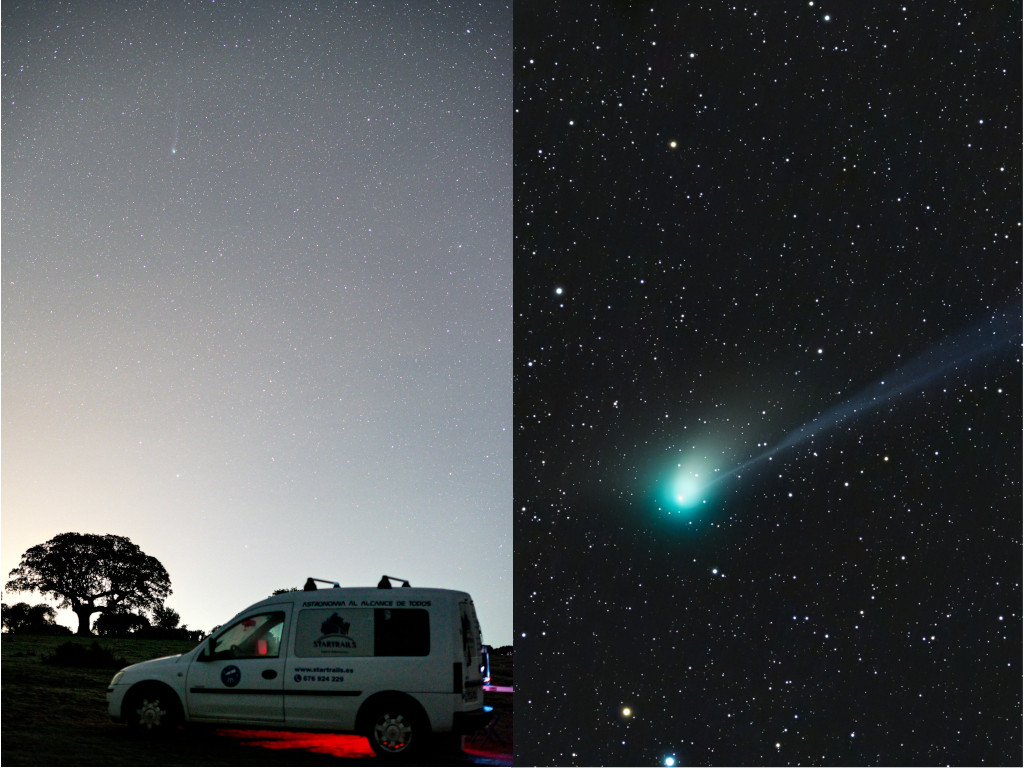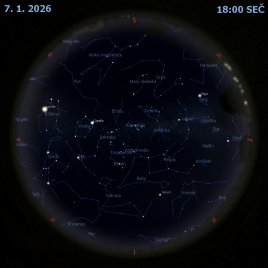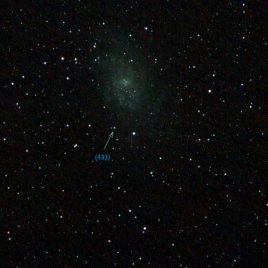Kometa ZTF pouhým okem

Uznání a copyright: Óscar Martín Mesonero (Organización Salmantina de la Astronáutica y el Espacio)
Kometa C/2022E3 (ZTF) nadále ke svému pozorování nepotřebuje dalekohled. Na venkovské obloze s malým světelným znečištěním z místa asi 20 kilometrů od španělské Salamanky ji 19. ledna bylo možné spatřit pouhým okem. Nicméně aby byl vidět jakýkoli náznak pěkné zelené komy, pahýlu bělavého prachového ohonu a dlouhého iontového ohonu komety je však stále zapotřebí teleskopických snímků. Její slabý iontový ohon rozvlnila nedávná sluneční aktivita. Tento návštěvník ze vzdáleného Oortova oblaku obletěl 12. ledna Slunce a nyní prolétá mezi hvězdami poblíž severní hranice souhvězdí Pastýře (Bootes). Kometa ZTF je už na odletové dráze, ale stále se zjasňuje a k naší milé planetě se nejvíce přiblíží 2. února na vzdálenost asi 2,4 světelné minuty.
Seznam odkazů v popisu
- EarthSky.org: Comet 2022 E3 now in morning skies, brightening
- SkyAndTelescope.org: CIRCUMPOLAR COMET ZTF (C/2022 E3) IS HERE!
- APOD: 2023-01-09 Ohony komety ZTF
- SpaceWeather.com: Thursday, Jan. 19, 2023
- NASA: Oort Cloud
- TheSkyLive.com: Comet C/2022 E3 (ZTF) 15 Days Ephemeris
- VanBuitenen.nl: C/2022 E3 (ZTF)
NASA Official: Phillip Newman Specific rights apply. NASA Web Privacy Policy and Important Notices
A service of: ASD at NASA / GSFC & Michigan Tech. U.
Odkaz na originální APOD


